Travel to Extremadura and Lisbon
Day 2 El Escorial - Trujillo - Badajoz (411 Km.)
El Escorial: The Royal Seat of San Lorenzo de El Escorial, World Heritage Site since 1984, was the political center of the empire of Philip II, where he organized his palace and library as well as his tomb, that of his parents, Charles I and Isabella of Portugal, and their families and successors, where he built a great basilica and founded a monastery.
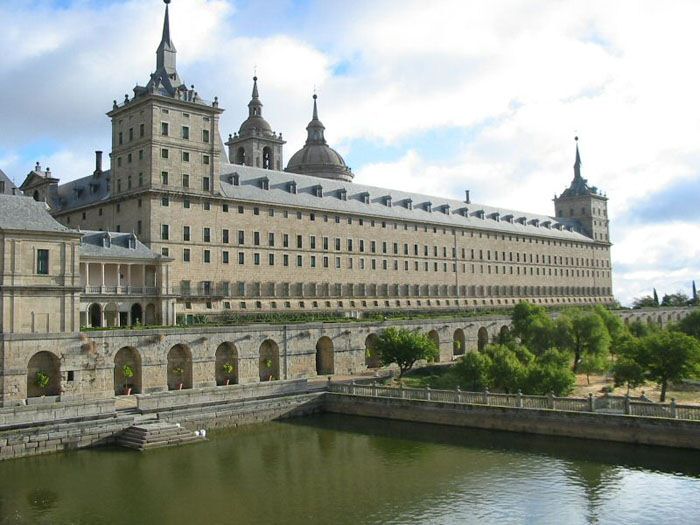
El Escorial - Monastery of San Lorenzo
(in 261 Km.) Trujillo: The city is built around the monumental Plaza Mayor, which is dominated by an equestrian statue of Pizarro in bronze. For centuries, has been the center of social and commercial life of the city, housing markets, festivals and all kinds of shows. In the sixteenth century became a stately square, as the conquerors and various noble families began to build houses and palaces there. The Palace of the Marquis de Piedras Albas is another noble buildings overlooking the square and marked by three segmental arches.
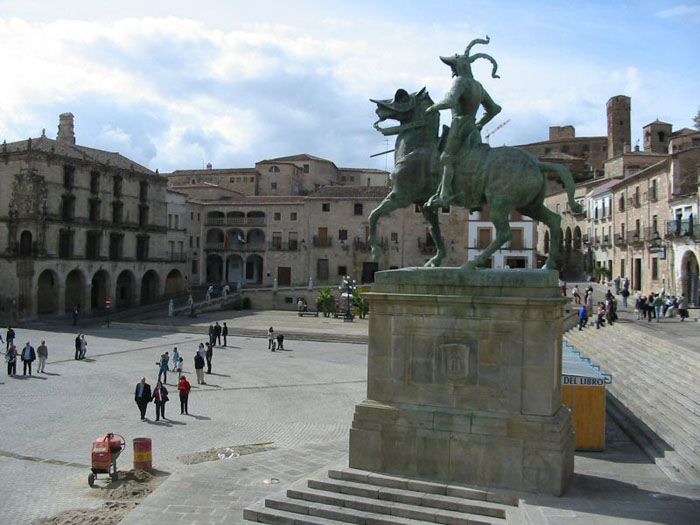
Trujillo - Plaza Mayor
On the square stands the church of St. Martin, built between the XIV and XVI. Next is the Palace of the Dukes of St. Charles (Palacio de los Duques de San Carlos), the sixteenth century. Is characteristic in this construction a corner balcony and the coat of arms of the Vargas-Carvajal family. One of the highlights of this environment is the Palace of the Marquis of the Conquest (Palacio de los marqueses de La Conquista). Its construction in 1570, was funded by Hernando Pizarro. The façade has a corner balcony with Plateresque decoration and two balustraded columns. The set is surmounted by the coat of Francisco Pizarro.
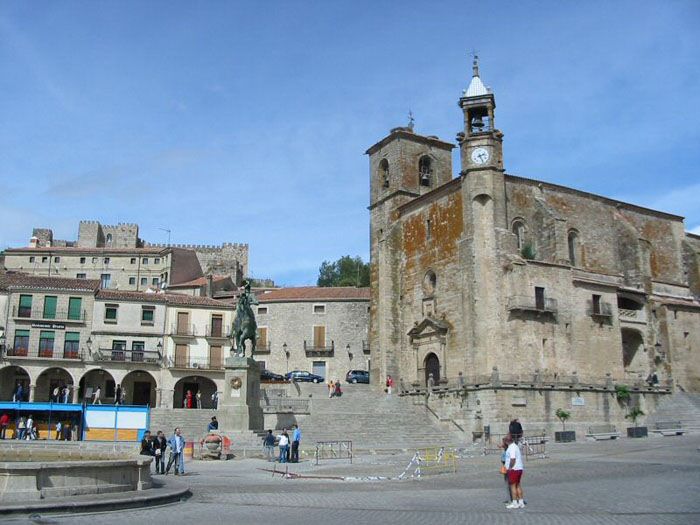
Trujillo - Church of San Martín
In the cobbled streets that start from the square are other noble houses such as Casa del Peso Real or of Chaves Cárdenas, Gothic with Renaissance, or the Palace of Juan Pizarro de Orellana, the sixteenth century. The building has on his interior a Plateresque courtyard. From the Alcázar de los Altamiranos highlights its main entrance, the sixteenth century, flanked by two demolished towers and the shield of the Altamiranos.
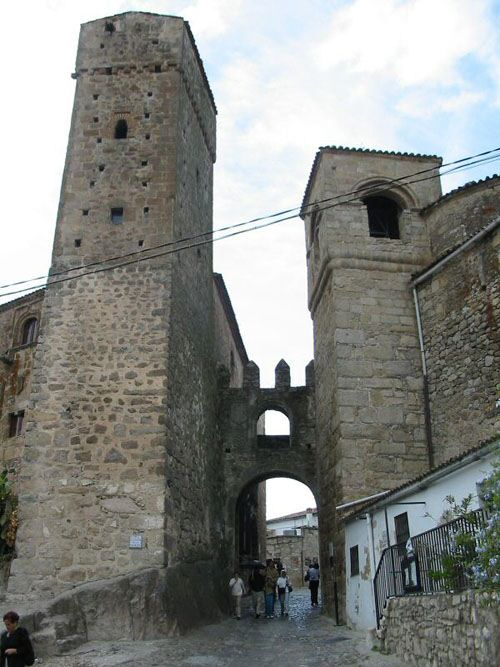
Trujillo - Gate of Santiago
The historic center includes the churches of Santa María la Mayor and Santiago, both from the Middle Ages. The church of Santa Maria is considered one of the finest examples of Romanesque architecture in Trujillo. The building, erected on an ancient Moorish mosque, has several medieval portics on the outside and a tower for the late Romanesque. Inside is a Gothic altarpiece by Fernando Gallego in 1480. The church of Santiago, located next to the door of the town of that name, was built in the thirteenth century and remodeled between the XV and XVII. From the original building remains a semi-cylindrical apse and the tower.
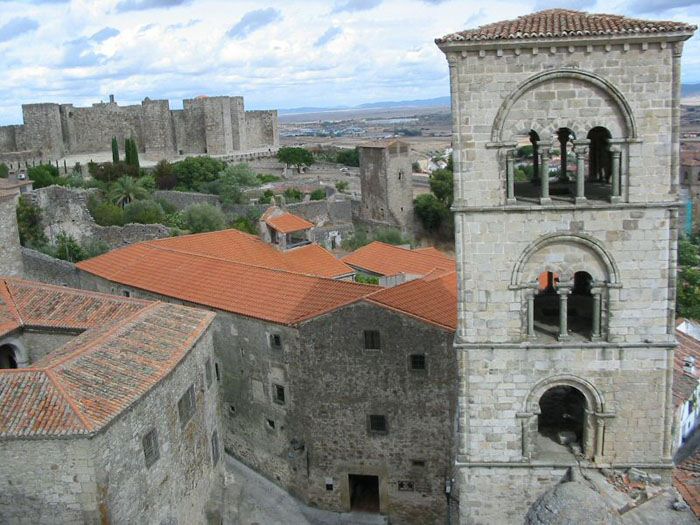
Trujillo - Santa María la Mayor and Castle
Overlooking the town stands the castle Arab Caliphate (X-XI century), built during the heyday of the Caliphate of Córdoba. The building stands out for its beautiful watchtowers and the two Water well (cisterns) that are in their courtyard. In the southern bastion stands the Sanctuary of the Virgen de la Victoria, patron of the city.
(in 150 Km.) Badajoz: We will sleep in this city bordering Portugal from which to depart the next day to Lisbon.